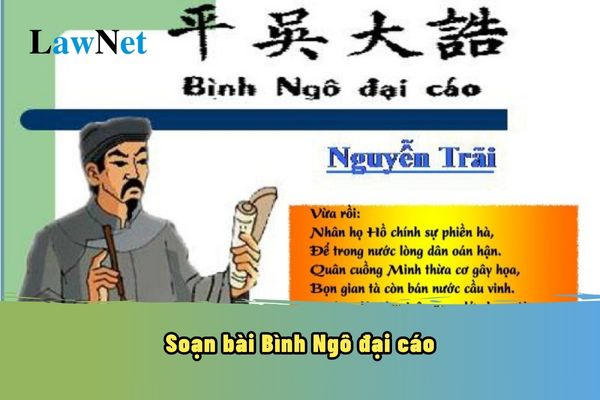What are the guidelines for preparing the lesson "Bình Ngô Đại Cáo" for 10th-grade students? What are the required outcomes regarding reading comprehension in the 10th-grade Literature curriculum in Vietnam?
What are the guidelines for preparing the lesson "Bình Ngô Đại Cáo" for 10th-grade students in Vietnam?
10th-grade students can refer to the following sample lesson "Bình Ngô Đại Cáo":
|
Guidelines for preparing the lesson "Bình Ngô Đại Cáo" for 10th-grade students 1. Purpose of Composition: |
*Note: The information is for reference only./.

What are the guidelines for preparing the lesson "Bình Ngô Đại Cáo" for 10th-grade students? What are the required outcomes regarding reading comprehension in the 10th-grade Literature curriculum in Vietnam? (Image from the Internet)
What are the required outcomes regarding reading comprehension in the 10th-grade Literature curriculum in Vietnam?
Under Subsection 2 of Section 5 of the General Education Program for Literature issued with Circular 32/2018/TT-BGDDT, the required outcomes regarding reading comprehension in the 10th-grade Literature curriculum in Vietnam are:
(1) Reading comprehension of Content
- Be able to comment on the overall content of the text; analyze significant details, themes, stories, characters, and their relationships within the integrity of the work.
- Analyze and evaluate the theme, ideology, and message that the text intends to convey to the reader through the artistic form of the text; analyze some bases for identifying the theme.
- Analyze and evaluate the emotions, sentiments, and dominant emotions expressed by the writer through the text. Discover moral and cultural values from the text.
(2) Reading comprehension of Form
- Identify and analyze some elements of epic, myth such as: space, time, plot, characters, narrator's voice and character's voice, etc.
- Identify and analyze some elements of a story such as: characters, story, third-person narrator (omniscient narrator) and first-person narrator (limited narrator), viewpoint, narrator's voice, character's voice, etc.
- Analyze and evaluate the aesthetic value of some elements in poetry, such as words, imagery, rhyme, rhythm, opposition, lyrical subject, lyrical character.
- Identify and analyze some elements of a cheo play or tuong such as: topic, anonymity, plot content, characters, dialogue, transmission method, etc.
(3) Relation, Comparation, Connection
- Apply knowledge about the author Nguyen Trai to Reading comprehension of several works by this author.
- Identify and analyze the historical-cultural context represented in the literature.
- Compare to see several content similarities between literary works of two different cultures.
- State the meaning or impact of the literary work on the reader's perception, perspective, and emotions; express personal feelings and evaluations of the work.
(4) Extensive Reading
- Read at least 35 literary texts (including texts guided for reading on the Internet) of equivalent genre and length to the texts studied within an academic year.
- Memorize some favorite poetry passages or poems from the program.
What are the 05 duties of 10th-grade students in Vietnam when attending school?
Pursuant to Article 34 of the Charter for lower secondary schools, upper secondary schools, and multi-level schools issued with Circular 32/2020/TT-BGDDT, the 05 duties of 10th-grade students in Vietnam when attending school are as follows:
1. Learn and train according to curricula and education plans of their schools.
2. Respect their parents, officials, teachers and staff of their schools, and those older than them; maintain solidarity and mutual support in learning and training; conform to the charter and rules of their schools; and abide by the law.
3. Take exercises and maintain personal hygiene.
4. Participate in group activities of their schools and classes, Ho Chi Minh Young Pioneer Organization and Ho Chi Minh Communist Youth Union; help their families, join physical and social activities and environmental protection activities, and maintain traffic order and safety.
5. Protect school and public property; contribute to fostering, preservation and enhancement of school traditions.

